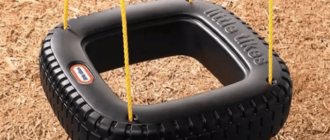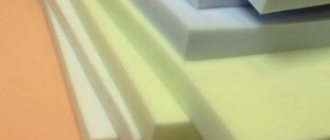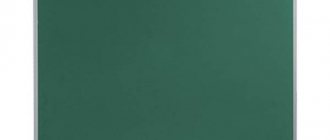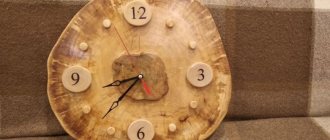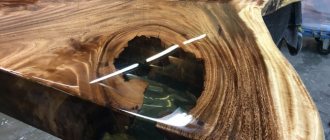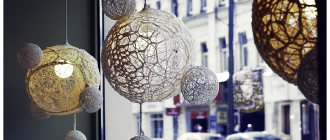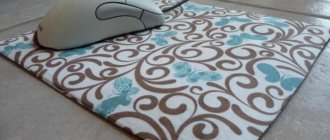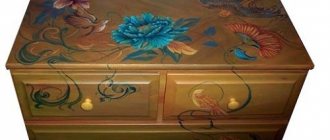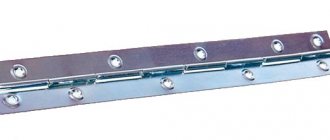Decorating furniture can not only add personality to it, but can also give a second life to interior items that have served their purpose. One of the oldest, but no less popular ways to decorate and transform a table, wall, garden path, bench or other things is mosaic.
Anyone can make mosaic decor with their own hands. A little imagination and effort - and an original item, one of a kind, will appear. A table is probably the most functional piece of furniture. It can be for dining, coffee, tea, games, toilet, decorative, garden, or simply serve as a beautiful stand for a lamp, flowers, etc. Therefore, it is the countertops that are most often updated and decorated. What is mosaic made from? To create it on the table, they use both ready-made special material (decor, mosaic) and various raw materials that are at hand. These are broken tiles, glass, ceramics; eggshell; shells, pebbles, old CDs and much more.
Garden table
Dishes break for good luck! So why throw away the fragments? Collect them little by little - one day you will make a beautiful thing out of them with your own hands, which will become a reason for a good mood and a witness to your future happiness
A table with a tabletop decorated with a mosaic of porcelain pieces and small ceramic tiles is an ideal solution for the garden. You can put a vase of flowers on it, have a family tea party, and have fun. This colorful ceramic beauty on the table is not afraid of wind, water, and will not fade in the sun.
What to make a mosaic from?
For mosaics, you can use both finished tiles and pieces left over after renovation.
The ideal raw material for creating mosaics is pieces of ceramic tiles left over after renovation. Often, owners specifically purchase a slightly larger quantity of tiles, because during the gluing process they can break or become damaged. Some stores sell broken ceramic tiles at the price of recycled materials or give away the remains of unclaimed collections at a reduced price. All these tiles are suitable for making mosaics.
Before starting work, the material must be crushed with your own hands. The easiest way is to cut the elements into small pieces with a simple glass cutter. In this case, the pieces can have different shapes and sizes. To create pieces of equal size, a tile cutter is usually used. When cutting tiles, the pattern should be taken into account: if in one case the geometric correctness of the elements is important, then in another case the image will look more beautiful from chaotically cut pieces.
Related article: How to paint glass and create paints with your own hands
Materials and tools
To start working with your own hands, you must have the following ready:
- moisture-resistant plywood 25 mm thick,
- rope,
- pencil,
- hacksaw,
- sandpaper,
- drawing pin,
- wood primer,
- paint brush,
- fragments of broken porcelain dishes with and without patterns,
- mosaic ceramic tiles,
- tile nippers,
- knife with blade (flexible),
- tile grout,
- tile adhesive,
- cement pigment,
- sponge,
- a piece of soft cloth.
Preparing the base
Wood is a rather complex and capricious material, so it is important to approach the installation of mosaics on it with special care and some points should be taken into account:
- in relation to wood, you cannot use soluble mixtures prepared on a cement basis,
- excessive moisture in the adhesive composition can cause swelling of the wood and subsequent deformation of the mosaic layer,
- When laying mosaics, it is necessary to use glue with a high degree of elasticity. For example, Atlas-Plus glue has exactly these characteristics, and at the same time its retail price is $12 per bag weighing 25 kg,
- Wood tends to dry out due to hot climates and swell due to humidity, so the base for the tiles must have a layer of primer,
- Mosaic elements can also be laid using regular liquid nails, but it is better to use special mosaic glue, which is a more convenient and economical option.
Garden tables, photos of which are presented in the article, are an excellent highlight for any interior.
Sequencing
- First you need to make the base of the table top out of plywood. In the place where the center will be, stick the button, securing the end of the rope to it. Measure the radius of the future table, make a loop at the other end of the rope where you should place a pencil. Moving the pencil around the center, draw a circle - the outline of the table.
- Using a hacksaw, cut out the circle you drew.
- Use a pencil on the string to draw several circles of different diameters. This will help to create a symmetrical surface decor scheme on the table.
- Sand the edges of the plywood circle with sandpaper.
- Cover the circle made of plywood on all sides and the end with a wood primer. The layer of special agent should be dense and even. Apply primer to each side one at a time, allowing the previous one to dry.
- Plan what kind of drawing you will make with your own hands.
- Using wire cutters, break the porcelain into the small pieces needed to complete your mosaic design idea. Set aside parts of a more regular shape for placement along the edge of the product.
- Use a knife to apply adhesive to each mosaic piece, then lightly press it into place on the table. Start working from the center, gradually moving towards the edges. Make sure to maintain symmetry in the drawing, lay the drawing evenly, leaving approximately the same distance between the elements. Lastly, decorate the edge of the tabletop.
- Leave the completed mosaic pattern to dry. In the meantime, prepare the grout for work. If you wish, add a little coloring agent to the material. You should get a homogeneous thick mass without lumps.
- Gently rub the grout with your fingers into the voids between the mosaic pieces until it fills them tightly. Coat the edge of the table well.
- Wet the sponge and wring it out well. Remove excess grout from the mosaic tile on the table.
- After complete drying, wipe the mosaic with a dry soft cloth.
A table with a beautiful mosaic tabletop will decorate your garden, cottage or apartment.
Peculiarities
Every year the cost of furniture and building materials only increases, so updating the interior regularly is not possible for everyone. Kitchen furniture is especially deformed over time. There is no need to be upset; there is an excellent solution for such a case. Mosaic tiles will help you save, renew, decorate your old kitchen set or other surfaces and add originality and freshness to the interior.
Mosaic is a tile, the dimensions of which are determined from one and a half to 2.5 cm. The shape of the fragments can be very diverse. They can be square, triangular, rectangular, round and any other arbitrary shape.
Mosaic for cladding various surfaces in the interior is divided into the following types:
- glass is the most used type, the main feature of which is its low price and different types of designs (matte, transparent, colored, gold and silver, with various shades and additions);
- metal mosaic;
- ceramic - it happens: in the form of cut sheets of porcelain stoneware and ceramic tiles;
- stone - from lapis lazuli, jasper, marble, travertine;
- smalt tiles are the most expensive type, but at the same time high-quality and reliable.
Reliability and unusual appearance are what distinguish mosaic countertops. This decorative solution is ideal for decorating the living room, bathroom and other rooms. Small tiles make up a picture or a beautiful pattern.
Please note that such a tabletop has considerable weight, so it is necessary to pay attention to the reliability, strength and stability of the base.
Step-by-step instruction
- Since the table should turn from beige to white, we first paint the lower part of the table top and legs with white paint. Leave until completely dry.
- Degrease the table surface. Apply glue to it with a spatula, spreading it evenly over the surface. Glue the mosaic. It’s easy to do this with your own hands, since it is already a composition glued onto pieces of mesh.
- To cover the ends, we also glue cut out mosaic strips onto them. The side decor should be secured with tape until completely dry.
- When the glue on the table has dried, we begin to process the seams. Since the object itself is white, we will use white grout. Carefully seal the seams with a rubber spatula. Remove excess grout with a damp sponge. Leave the table for 24 hours to allow the composition to dry.
There is nothing easier than decorating a table in this way with your own hands. Now you can safely put a pot of flowers - water spilled on the surface will not spoil the beautiful tabletop.
Description of work
- Prepare the wooden surface for decoration. Wipe the table and sand any uneven areas with medium-grit sandpaper. Wipe well again.
- Cut the discs into small pieces, approximately 3x3 cm.
- Glue the disk pieces to the table using glue. Place the elements on the table so that the distance between them is about 2 mm. Do not forget to alternate the back and front sides of the mosaic particles.
- Using construction putty, carefully fill all the empty spaces and indentations created during the design. Wipe off excess substance from the surface with a slightly damp sponge.
- After 12-24 hours, cover the mosaic table with two layers of acrylic varnish (with a break for drying).
Base
12mm plywood is used as the base of the tabletop.
An indented tile apron was made in advance.
At one end of the tabletop there will be a built-in freezer, to which there is no cabinet. Therefore, on this side the plywood is attached to the wall at the corners. I painted the plywood underneath to match the color of the kitchen unit.
I glued construction panels on top of the plywood and secured them with self-tapping screws.
Essentially it is extruded polystyrene foam, reinforced with fiberglass on one or both sides and covered with a cement layer. This material is used to make benches in Turkish saunas. In terms of price, it is much more expensive than ordinary polystyrene foam, but it seems to me that for such a task it is worth the money. Instead of panels, you can use thin DSP, but they are heavy, and it is no longer possible to achieve a tabletop thickness of 5 cm.
Mosaic table: turning an old table into a beautiful piece of furniture
Today I will talk about turning an old IKEA children's table into a beautiful piece of furniture. Thanks to a mosaic made from broken tiles, an ordinary table will be transformed beyond recognition.
On such an exclusive table you can set up a small home greenhouse, since the tiles are not afraid of water and various mechanical damage from heavy pots of flowers.
Do you also have a table or other piece of furniture in mind that you would like to update and decorate with mosaics? Then read the job description carefully.
We will need: a table, broken tiles in 4 colors, a hammer for breaking tiles, white spirit or alcohol for degreasing the surface, Titan glue, colored grout for joints, a spatula, a ruler and a pencil for drawing, acrylic paint, thinner and a brush.
Algorithm of actions:
Mosaics give you the opportunity to decorate a variety of objects with your own hands, decorate any surface, and the creative process is nothing but pleasure!
Italian sink
Anyone familiar with the architecture of Italy has probably paid attention to the beautiful mosaic ensembles in the interiors, where everything is made of mosaics: tables, sofas, flower vases, bath bowls and sinks. Today, anyone can install an Italian sink in their home. The technology is the same: decorate an old faience sink with mosaic or install a bowl cast from concrete. You can cast it yourself by using two dishes of different diameters instead of a silicone mold.
You will have to lay out the mosaic on the inside of the sink manually, one tile at a time, making sure that the edges of the tiles are in the same plane and do not protrude and do not create roughness. It's a painstaking job, but you'll be rewarded with a luxurious interior.
Have an old table or chair? Let's take a mosaic and create a designer masterpiece! I did it, and so can you.
If you think that in hardware stores I only look at wooden slats and figure out how to use them, then you are mistaken! I will give a link to a story about what can be made from slats at the end of this article. And now, let's talk about something else.
I will give a link to a story about what can be made from slats at the end of this article. And now, let's talk about something else.
While at OBI, I always went into the ceramic tile department, and more specifically, I went straight to the stands with mosaics! I meditated for so long until I finally decided that I need to do something about this obsession of mine!
The fact is that one day I saw a video on the Internet of how a girl (herself!) made a kitchen table out of a simple sheet of plywood, it seems there were 2 layers, and a couple of bars. She simply covered the surface of the table with mosaics! You can’t imagine how stylish, beautiful and most importantly, as it turns out, very functional. This is not a countertop that needs maintenance.
On such a surface, you can pour water, splash beets and spill orange juice - no traces remain :).
And this is what I got. I won’t brag, the idea is simple, the execution is the same, but this table makes me happy. I worked with mosaic and grout for the first time and, I can now say that it is quite easy.
IKEA table IKEA table
As a base I used the LACK table, an IKEA “paper” table. Why "paper"? Because it's made of cardboard. Quite by accident, I broke its surface, dropping a baguette on it. It was a shame to throw it away, and besides, it was a housewarming gift - my first piece of furniture, so I decided to save it :).
So, practically as a specialist, I say – working with mosaics is easy! There would be a desire!
But what can be done using mosaics deserves attention. Lots of ideas!
Let's take tables for example. Look what people are doing! These crafts are simple to perform (again, I’m speaking from the “height” of my mosaic experience). How does it look? What a sight for sore eyes!
Master class: DIY mosaic table
There is a time when it seems to us that money can replace love, religion can replace spirituality, and PVC films and tablecloths can replace mosaic coverings. Everything flows, everything changes! And the time of delusion and ignorance also passes. It is at such moments that you need to go into the kitchen, take a critical look at it and choose a “victim” of the upcoming transformations.
Table after renovation.
Choice of color and material.
Smalt mosaic was chosen not under the pressure of fashion trends, but rather for ideological and practical reasons. And the color of the tile corresponds to the color of the dominant chakra. The tabletop will represent a simplified picture of the world: small green tiles are people, white grout is the unconditional love that connects us all, and the strength and durability of the coating will represent the indestructible Unity of the universe! Confused?! Maybe! But without ideology I cannot create.
Beginning of work.
To prepare the table surface for work, call all family members who cut a loaf without a board, put a hot pot of coffee on the tablecloth, and committed other unauthorized acts. Give them a knife in their hands and allow them to do everything that was previously prohibited! After the surface of the table has been cleaned of film, it is necessary to scratch the tabletop thoroughly to ensure good adhesion of the mosaic to the table and to degrease the surface.
Working with mosaics.
Once the table is ready for use, you can begin measuring. We lay out the sheets of mosaic on the table and cut off the excess. Maintaining the sequence of the layout, remove the tiles from the floor.
With some difficulty we squeeze the liquid nails onto the table and spread them over the surface with a notched spatula. We take a sheet of mosaic and carefully apply it to the tabletop, lightly pressing it over the entire surface so that each tile fits tightly to the table. It would be nice to wait 24 hours, but I don’t have the patience, so after 3-4 hours you can remove the paper covering the tile. To do this, you just need to wet it a little and wait, it comes off easily.
Here comes the dangerous moment of causal joy. The moment is dangerous because only 50% of the work has been done, and the table is already pleasing to the eye. No later than the next day, when the glue has dried, you need to apply grout.
Grout.
This was my first time working with mosaic and grout, so doubts and fear somewhat spoiled the process for me. But “the eyes are afraid - the hands do it”! Everything turned out to be simpler than it seemed, but more complicated than it is shown in programs about repairs.
Mix the dry grout with water (300 ml per 1 kg), mix well and generally strictly follow the instructions written on the packaging, and not at random.
Dump the grout onto the table on top of the mosaic and rub it diagonally across the table with a rubber spatula.
I didn’t have enough 1kg of grout for a 50*70cm table, but the packaging says that 1kg should be enough for 1.5 square meters. Apparently these data are for regular 15*15cm tiles, and not for 2*2cm mosaics.
Let the grout dry for about an hour. Using a damp sponge, without pressing, remove excess grout from the surface of the mosaic.
Improvements.
I chose not smooth tiles, but ones with irregularities and crevices, so that they would look more natural. This created additional difficulties, because The grout is stuck in the tiles. To get rid of this defect, you can use regular soda or pemolux.
Parade of hot pans.
When the grout has completely dried (about 48 hours), you can taste the fruits of your labors. Now you can avoid family conflicts and safely hold championships in cutting loaves without a board or arrange a parade of hot frying pans on the table.
Who cares? A big difference!
The difference between mosaic coating and PVC film is the same as the difference between “Sat-Chit-Ananda” and “Save and Preserve”.
